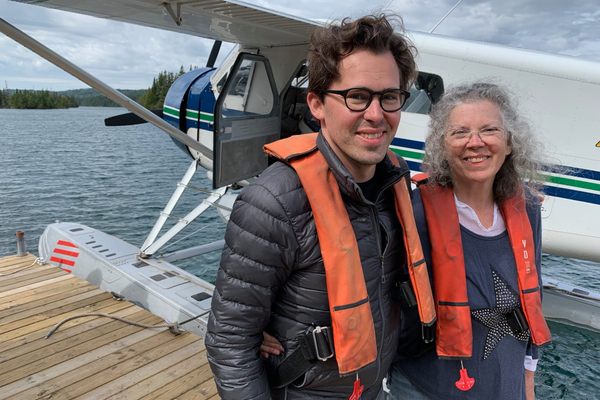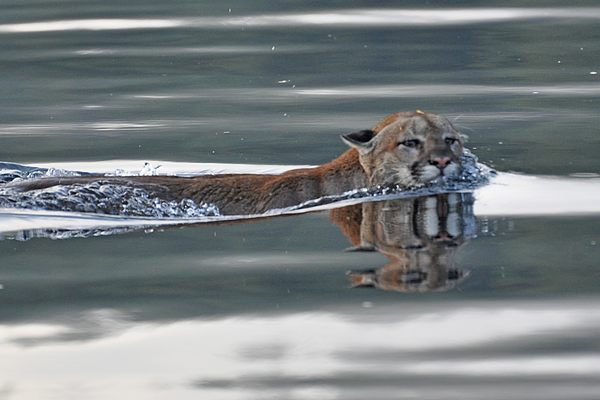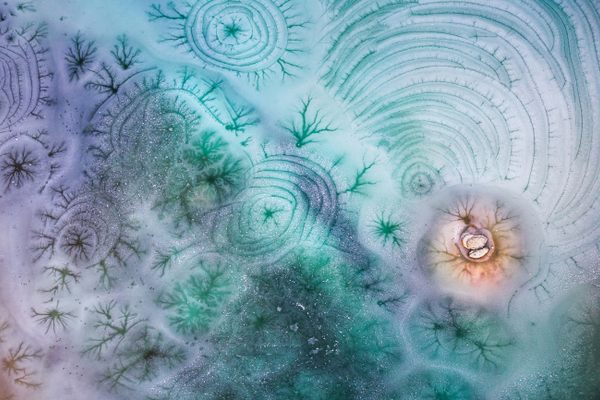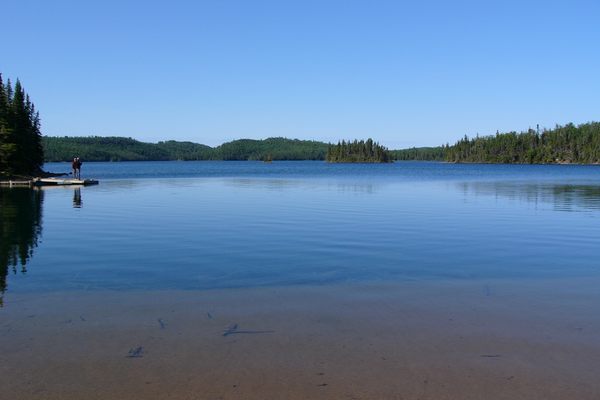These Scientists’ Field Site Competition Will Make You Consider a Career Change
How beauty and boredom led to a #fieldworkfaceoff

Sometimes, this is what doing science looks like. (Photo: Joshua Drew)
It began as “a very loving and joking one-up-manship,” says Joshua Drew, an ecologist at Columbia University. The question was simple: Who gets to work in more beautiful places? The challenge: Prove it.
Thus, #fieldworkfaceoff was on.
In the summer, when the academic calendar releases them from the classroom, scientists head to the field. This is their chance to observe firsthand the bit of the world that they’re trying to understand. Fieldwork isn’t glamorous: scientists often find themselves alternating between sprints of manic work and stretches of necessary boredom, while on a budget and in less than comfortable quarters.
But then there are moments like these:
Sunrise on #Attu. Who said the Aleutians were always rainy? #fieldworkfaceoff pic.twitter.com/AxuKIkRbac
— Kelly Eldridge (@ossiferous_ak) June 23, 2016
I got a nice office. #fieldworkfaceoff pic.twitter.com/kC0vouLgVc
— Imogene Davis (@biologistimo) July 1, 2016
The swing between the highs and lows of fieldwork can be breathtaking. “You can go from horribly wrong—I’ve wasted $10,000 worth of money—to waking up in the morning and feeling like the luckiest person in the world to be working in a place like this,” says Drew. Last year on social media, scientists went through a collective airing of their most embarrassing fieldwork experiences, under the label #fieldworkfail. It was so popular there will soon be an illustrated book featuring some of the best.
Anne Hilborn, an ecologist who studies the interaction between predator and prey, was one of originators of #fieldworkfail and still has a prime example, featuring cheetah poop, pinned to the top of her Twitter timeline. “There’s something attractive about ridiculous stories of people doing dangerous things,” she says.
With #fieldworkfail, decades of experiences and stories came pouring out, at once. The joys of #fieldworkfaceoff are different. This new Twitter game, of cheeky “my field site is better than yours” posts, began Drew says, because he “wanted to highlight that it’s not all cheetah butts.”
There’s also that element of fun, adventure, and straight up beauty:
Our research boat pulling in for a tune-up & a totally necessary test run w/ @MichelleAKline #Fiji #FieldworkFaceoff pic.twitter.com/7qnga0kyWw
— Matthew M Gervais (@MatthewMGervais) June 29, 2016
Blazing the trail thru lyonia jungle/swamp #Bear habitat #fieldworkfaceoff pic.twitter.com/sSuqooxa3R
— Dana Karelus (@dana_karelus) July 1, 2016
I’m not even joking. Today’s #FieldworkFaceoff #CUinFiji16 cc @helenscales @ivanscales @MalloryMcKeon @meehancrist pic.twitter.com/3v39bZR4zp
— Joshua Drew (@Drew_Lab) June 11, 2016
Arrived late to the Dismal Swamp to check moth traps. They let me in and I had the place to myself #fieldworkfaceoff pic.twitter.com/CAZV3c6t0E
— Clark DeHart (@ClarkDeHart) May 1, 2016
“It’s a nice way to show daily life, and the wins and the losses at the same time,” Hilborn says. For example:
A grand day for it.#fieldworkfaceoff pic.twitter.com/qdi0bd9rTL
— AK Salmon Program (@AKSalmonProg) June 25, 2016
Very little fieldwork is more fun than cutting open salmon brains to get the earbones (otoliths)#fieldworkfaceoff pic.twitter.com/znQvkHE6TF
— Anne Hilborn (@AnneWHilborn) May 1, 2016
What set off the camera trap? #fieldworkfaceoff pic.twitter.com/PVthPY0XJe
— Anne Hilborn (@AnneWHilborn) July 1, 2016
In this past, these moments might have passed by, or if they were documented, been piled with the dump of data that scientists brought with them back to “real life.” Increasingly, though, even remote field sites have wireless hotspots, and it’s as easy and tempting to share the moments of great science life as it is for anyone on vacation. Plus, as much as scientists might like brag a little about their own field sites, they also like getting a glimpse of the work others are doing.
@AnneWHilborn @Drew_Lab This is only the beginning… #fieldworkfaceoff pic.twitter.com/QFOrpJuPQH
— Julia Monk (@hooliamonk) May 1, 2016
Also—perhaps most importantly—“it helps with the boredom,” says Hilborn.




















Follow us on Twitter to get the latest on the world's hidden wonders.
Like us on Facebook to get the latest on the world's hidden wonders.
Follow us on Twitter Like us on Facebook